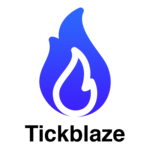What’s Behind the Rise of Carrier Billing?
 By Charlotte Newby, Dimoco
By Charlotte Newby, Dimoco
Carrier billing is on the cusp of becoming a global phenomenon. Take Europe as an example. In a recent white paper by Juniper Research, experts forecasted a 27 percent increase in carrier billing use in Europe between 2016 and 2021. In that region alone carrier billing is expected to be an approximately $12.13 billion industry in less than five years—and there is little doubt that other regions will soon follow with similar growth.
What is driving this boom? Boasting ease of use at a time when consumers want the fastest way to access great content, carrier billing is particularly well-suited for younger consumers, who might otherwise be boxed out of the online buying market.
The Carrier Billing Opportunity
To be sure, the digital native market has the potential to be a key driver for carrier billing. Armed with smartphones and other connected devices, this teenage and young 20-something demographic serves as particularly fertile ground for carrier billing. The reason: While fantastic paid content is being developed to cater to this target group, teens cannot legally own payment cards in nearly all markets (and those in their early 20s may not be credit-savvy).
This means that the traditional process of purchasing paid content via credit cards is beyond them, leaving carrier billing as a prime alternative. Carrier billing eliminates the need for a credit card, enabling businesses to maximize billing across this relatively under-utilized—albeit content-hungry—user base.
One and Done
Like most payment options, carrier billing is always available. What resonates especially with the younger generations like millennials is its simplicity. It doesn’t require users to insert complicated long digit codes or to do preregistrations. Instead, transactions are completed with a one-click option. Because of the trusted billing relationship at the core of carrier billing, smartphone users can, in most countries and on many different network operators, purchase digital content and services with just a simple, single touch.
Gaming, Video on Demand
The gaming sector (already more than 90 percent of PC game revenues are derived from digital sales) is seeing a faster-than-anticipated migration from physical to digital format. At the same time, gaming will continue to account for the largest share of carrier billing digital content consumption in 2017, while there is also a significant (and increasing) shift from handheld games to those on smartphones and tablets.
Video on Demand (VoD) is also experiencing significant growth with consumers taking advantage of real-time acquisition and consumption of their entertainment whenever and wherever they are. Furthermore, social games, which are popular among youthful gamers, continue to increase in popularity.
Mobile, Online Ticketing
Statistics show a steady trend toward fewer urban millennials and post-millennials in the U.S. and Europe owning cars, which means an increased need for public transportation. While our research suggests that the typical cost of air and train tickets will preclude these services from being offered via carrier billing (the average price for a plane ticket was $243 in 2015), the same is not true for less expensive, but heavily used, local bus and light rail options.
This is a particularly robust growth opportunity as digital sales in this area are developing rapidly. Juniper Research estimates the amount spent on European metro tickets purchased via mobile will increase from $1.39 billion in 2015 to nearly $399 billion in 2020.
Carrier billing is the right service at the right time. According to one study, 18- to 24-year-olds will reach a 77.3 percent digital buyer penetration rate by 2018. With the type of paid content that the demographic loves only increasing online, this group needs the right service to access paid content. Carrier billing is simple to use, widely available and a key option for those young consumers who otherwise can’t use credit cards. The combination of those facts leads to one conclusion: Carrier billing is an essential tool for the immediate future, both for merchants and digital content providers.
Charlotte Newby, is head of corporate communications at Dimoco, a carrier billing and mobile messaging provider. She is in charge of the carrier billing institutes’ external and internal communication. She can be reached at [email?].
In Viewpoints, payments professionals share their perspectives on the industry. Paybefore presents many points of view to offer readers new insights and information. The opinions expressed in Viewpoints are not necessarily those of Paybefore.










































